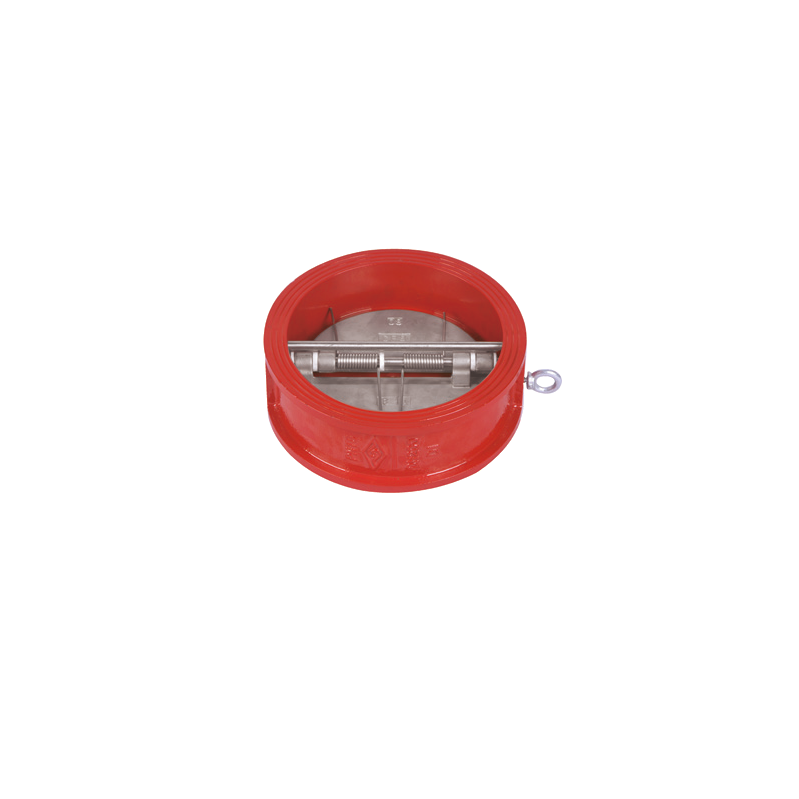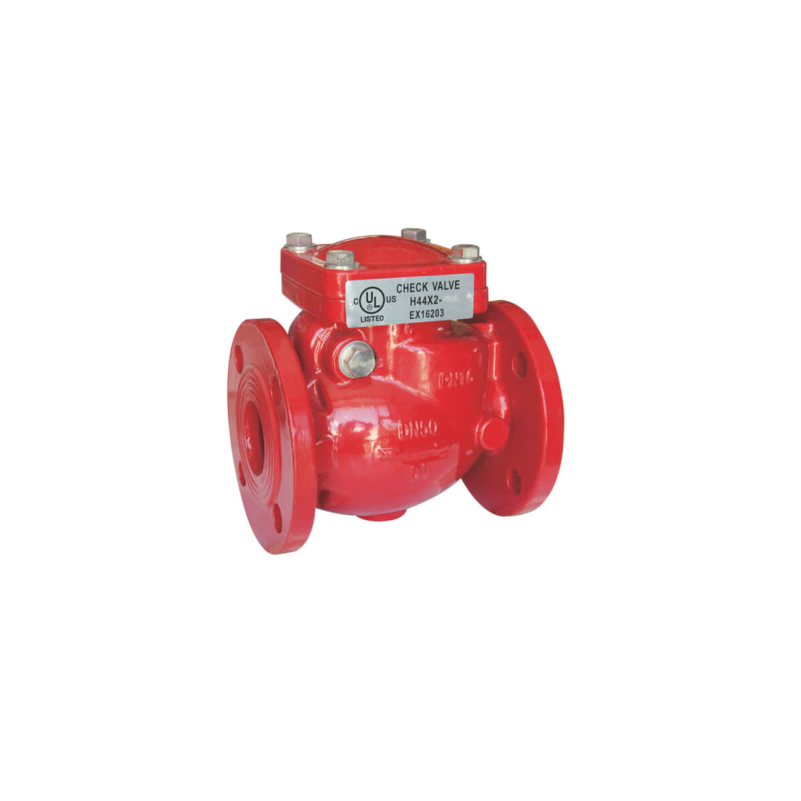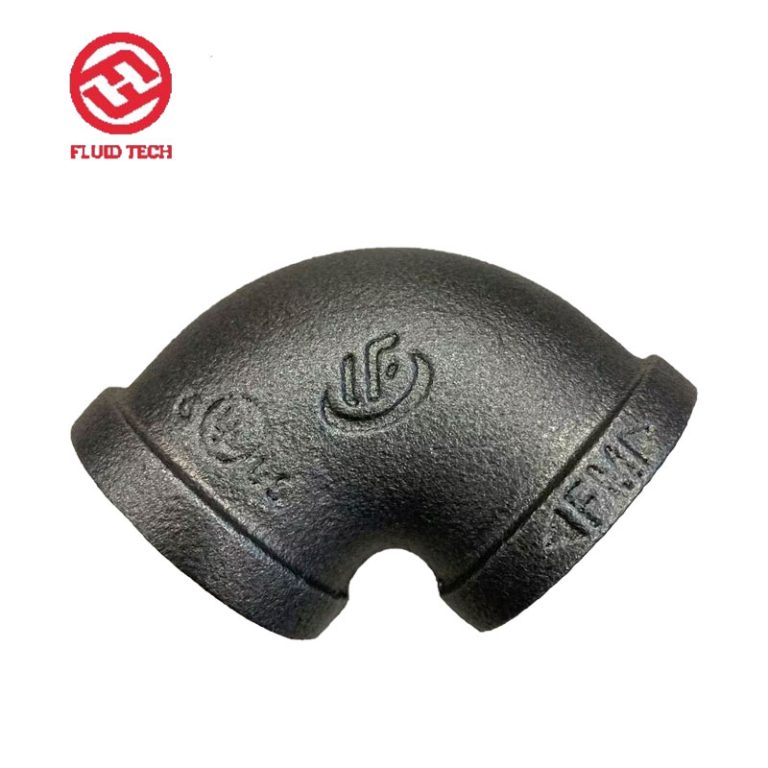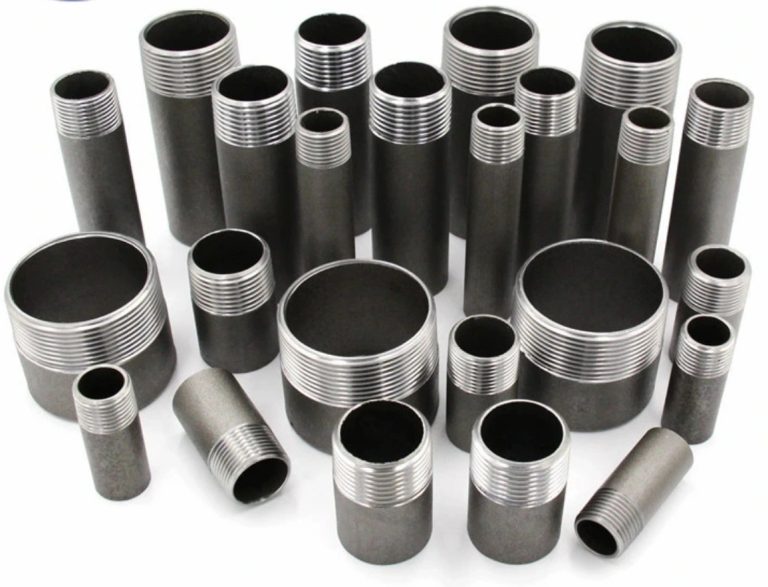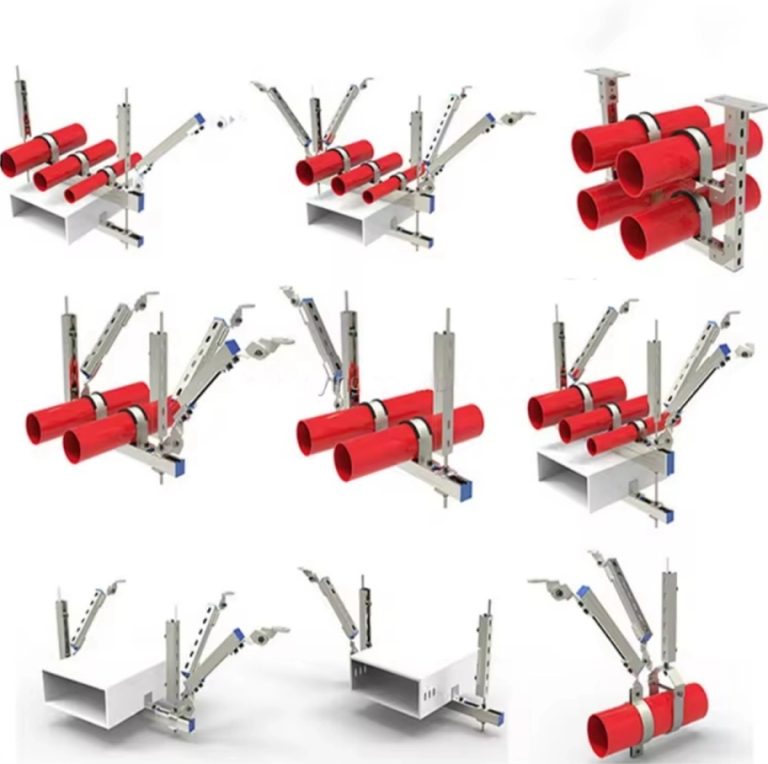En sistemas de seguridad contra incendios y tuberías de agua, mantener el flujo de agua de forma segura y correcta es absolutamente vital. Dos dispositivos importantes de los que se habla a menudo son los preventores de reflujo y las válvulas de retención. Ambos ayudan a controlar la dirección en que se mueve el agua, pero tienen diferentes trabajos, diseños y usos. Saber cómo un preventor de reflujo difiere de una válvula de retención es crucial para los expertos en construcción, plomería y seguridad contra incendios. Los operadores de instalaciones y propietarios también necesitan este conocimiento. Este blog explora sus funciones, usos y diferencias principales. Comprender esto te ayuda a tomar decisiones inteligentes para tu trabajo.
¿Qué es un preventor de retroflujo?
Un preventor de retroflujo es una pieza especial de equipo. Mantiene el suministro de agua potable seguro de la contaminación. Esto se hace impidiendo que el agua fluya hacia atrás. El flujo inverso ocurre cuando el agua se mueve en la dirección equivocada. Esto puede deberse al aumento de la presión o la succión. Tales eventos pueden permitir que cosas peligrosas entren en los sistemas de agua limpia. Los preventores de retroflujo son esenciales cuando el agua potable se conecta a sistemas que podrían introducir materiales nocivos. Los ejemplos incluyen sistemas de riego, rociadores de incendios o máquinas de fábrica.
Características clave de los preventores de retroflujo
- Propósito:Deja que el agua sucia vuelva a fluir a fuentes de agua potable limpia.
- Diseño:Utiliza varias copias de seguridad. Estos incluyen dobles válvulas antiretorno, aberturas de aire y mecanismos de liberación de presión. Esto garantiza una seguridad muy fuerte.
- Aplicaciones:Por lo general se coloca en los puntos de conexión. Aquí es donde el agua de la ciudad entra en los edificios de negocios o hogares. También se utilizan en máquinas como lavavajillas y lavadoras de ropa.
- Certificaciones:A menudo tienen aprobación FM y UL Listing. Esto significa que cumplen con estrictas normas de seguridad.
- Rango de temperatura:Por lo general se hace para manejar calor muy alto. Algunos tipos pueden llegar a 343 ° C (650 ° F). Esto los hace buenos para las configuraciones de seguridad contra incendios.
Los preventores de retroflujo tienen fuertes características de seguridad. Utilizan varias capas protectoras. Por ejemplo, un conjunto de doble comprobación (DCVA) tiene dos válvulas antiretorno separadas más una ventilación de aire. Si una válvula deja de funcionar, la válvula de repuesto y la ventilación bloquean la contaminación. Esto hace que los preventores de reflujo sean esenciales para proteger el agua potable. También ayudan a cumplir las leyes locales.
¿Qué es una válvula de control?
Una válvula de retención, también llamada válvula unidireccional, es un dispositivo más simple. Permite que el fluido se mueva en una dirección. Detene el flujo inverso. La gente a menudo lo utiliza en diferentes sistemas. Ayuda a mantener las cosas funcionando bien. También protege las partes del daño causado por el flujo hacia atrás. Sin embargo, las válvulas de retención no’ t tienen las copias de seguridad avanzadas que se encuentran en los preventores de retroflujo. Esto hace que no sean lo suficientemente buenos para proteger el suministro de agua potable.
Características clave de las válvulas de retención
- Propósito:Evita que el fluido fluya hacia atrás. Esto protege las partes del sistema.
- Diseño:Normalmente tiene una solapa de válvula. Esta aleta se cierra contra una base para bloquear el flujo inverso.
- Aplicaciones:Se utiliza en instalaciones como tanques de peces, sistemas de residuos, bombas de sótano, tuberías de aire y bombas de pozos de agua.
- Material:A menudo construido de latón, acero inoxidable o acero al carbono. Acabados como electro-galvanizado ayudan a resistir la oxidación.
- Limitaciones:Puede fallar fácilmente. La suciedad podría atascarlo. Podría cerrarse demasiado rápido. Esto provoca choques de presión en las tuberías.
Las válvulas de retención son adaptables y económicas. Sin embargo, no’ t ofrecen el mismo nivel de seguridad que los preventores de retroflujo. Esto es especialmente cierto para situaciones que involucran agua potable.
Preventor de retroflujo vs. válvula de retención: diferencias clave
Comprender las diferencias entre los preventores de reflujo y las válvulas de retención es crucial. Ayuda a elegir el dispositivo adecuado para su configuración. La siguiente tabla muestra sus principales contrastes:
| Característica | Preventor de retroflujo | válvula de retención |
| Función principal | Deja que el agua contaminada entre en fuentes potables limpias | Evita que el fluido fluya en el sentido opuesto |
| Nivel de protección | Múltiples capas (por ejemplo, dos válvulas antiretorno, aberturas de ventilación, liberaciones de presión) | Capa única (solapa de válvula en la base) |
| Aplicaciones | Instalaciones de agua potable, rociadores de incendios, riego, tuberías de negocios | Tanques de peces, sistemas de residuos, tuberías de aire, bombas de sótano, bombas de pozo de agua |
| Instalación Spot | En enlaces donde el agua limpia se encuentra con posibles contaminantes | Donde el flujo inverso puede dañar las partes del sistema |
| Costo | 2-3 veces más caro debido a la construcción compleja | Más barato debido a una construcción más sencilla |
| Certificaciones | FM Aprobado, UL Listado para seguridad contra incendios y usos de tuberías | Puede o no tener aprobaciones, depende del uso |
| Rango de temperatura | Hasta 343°C (650°F) para configuraciones de seguridad contra incendios | Varia, a menudo menor para usos estándar |
Por qué la diferencia importa
Para los sistemas de seguridad contra incendios, la seguridad y el seguimiento de las normas son las principales prioridades. A menudo se necesitan preventores de retroflujo para cumplir con estándares como los de FM Global o UL. Las válvulas de retención son útiles en trabajos menos importantes. Sin embargo, no pueden dar el mismo nivel de protección contra la contaminación. Esto los hace inadecuados para sistemas de agua potable.
Tipos de preventores de retroflujo
Existen varios tipos de preventores de retroflujo. Cada uno está hecho para trabajos específicos y niveles de riesgo. A continuación se presentan algunos tipos comunes:
- Brecha de aire:Un tapón de retroflujo no mecánico. Utiliza un espacio físico entre el suministro de agua y el recipiente receptor. Esto detiene la contaminación. Necesita mucho espacio pero funciona muy bien.
- Montaje de doble comprobación (DCVA):Tiene dos válvulas antiretorno. Se utiliza para trabajos de bajo a medio riesgo. Ejemplos son rociadores de incendios o sistemas de riego.
- Dispositivo de zona de presión reducida (RPZD):Hecho para situaciones de alto riesgo. Incluye dos válvulas antiretorno. También tiene una cámara de control de presión y una liberación de presión. Esto proporciona la máxima seguridad.
- Disruptor de vacío de manguera:Se utiliza para grifos al aire libre. Detene la aspiración de fuentes no potables como piscinas o cubos.
- Interruptor de vacío atmosférico (AVB):Utiliza una válvula pop-up. Evita la retroaspiración en los sistemas de riego.
- Interruptor de vacío de presión (PVB):Bueno para sistemas con agua no potable aguas arriba. Tiene puntos de prueba para comprobar.
Cada tipo se elige en función de las necesidades específicas de la tubería o el sistema de seguridad contra incendios. Las normas locales también juegan un papel.
Aplicaciones en sistemas de protección contra incendios
En las configuraciones de seguridad contra incendios, los preventores de retroflujo desempeñan un papel clave. Aseguran que el agua utilizada en rociadores o hidrantes no’ t contaminar el abastecimiento de agua de la ciudad. Por ejemplo, en proyectos como el Aeropuerto Internacional del Mar Rojo (Arabia Saudita, 2023), los preventores de retroflujo fueron vitales. Formaban parte de los sistemas de rociadores e hidrantes. Ayudaron a mantener la seguridad y el cumplimiento de las normas. De manera similar, las válvulas de retención se utilizan en lugares menos importantes. Ayudan a mantener la presión en las bombas de incendio. Pero no son suficientes para proteger las fuentes de agua limpia.
¿Por qué elegir productos certificados?
En Fluid Tech Piping Systems, todos los artículos de seguridad contra incendios incluyen preventores de retroflujo y válvulas de retención. Están aprobados por FM y listados por UL. Esto garantiza que cumplan con los más altos estándares de la industria. Las aprobaciones como FM, UL, CE, LPCB y VDS prometen fiabilidad y cumplimiento. Estos son críticos para proyectos como la Torre Kingsway (Nigeria, 2021) y la CIU Nicosia (Chipre, 2022).
Tecnología de fluidos: su proveedor confiable de válvulas de protección contra incendios
Fluid Tech Piping Systems (Tianjin) Co., Ltd. es un proveedor líder de respuestas de seguridad contra incendios. Se enfocan en artículos de alta calidad como preventores de retroflujo, válvulas de retencióny otras válvulas de seguridad contra incendios. Iniciada en 2018, Fluid Tech trabaja con fabricantes líderes. Ofrecen aprobación FM/UL artículos que garantizan la seguridad y el cumplimiento. Tienen una línea completa de artículos. Estos incluyen conectores de tuberías de hierro dúctil, conectores ranurados y configuraciones de refuerzo para terremotos. Ofrecen servicios de compra de una sola parada a empresas de construcción en todo el mundo. Su promesa de controles de calidad Cubre todo. Esto incluye las materias primas para los cheques antes del envío. Asegura que cada artículo cumpla con reglas estrictas. Elegir Fluid Tech le da acceso a asistencia técnica experta. También obtiene respuestas rápidas y rentables para sus necesidades laborales.
Conclusión
La elección entre un preventor de reflujo y una válvula de retención depende de su sistema’ necesidades específicas. Para proteger los suministros de agua potable, los preventores de reflujo son la mejor opción. Tienen múltiples copias de seguridad y siguen reglas estrictas. Las válvulas de retención son más sencillas y más económicas. Son mejores para trabajos donde detener el flujo inverso es menos crítico. Conocer sus diferencias y usos ayuda a garantizar que su sistema de seguridad contra incendios o tuberías sea seguro, eficiente y conforme. En Fluid Tech, proporcionamos respuestas aprobadas y de alta calidad para sus necesidades. Los respaldamos con la ayuda de expertos y una promesa de seguridad.
Preguntas frecuentes
¿Puede una válvula de retención utilizarse como preventor de retroflujo?
No, una válvula de retención no es un reemplazo seguro para un preventor de reflujo. Ambos detienen el flujo inverso. Pero los preventores de retroflujo tienen varias copias de seguridad. Estos incluyen dobles válvulas antiretorno y liberaciones de presión. Protegen las fuentes de agua potable. Las válvulas de retención ofrecen solo una capa de seguridad.
¿Dónde se requieren los preventores de retroflujo en los sistemas de protección contra incendios?
Se necesitan preventores de retroflujo en los puntos de conexión. Aquí es donde el agua limpia puede contaminarse. Ejemplos son sistemas de rociadores de incendios o enlaces de hidrante. Las leyes locales a menudo requieren su uso para garantizar la seguridad del agua.
¿Qué certificaciones debo buscar en preventores de retroflujo y válvulas de retención?
Para sistemas de seguridad contra incendios, busque la aprobación FM y la lista UL. Estos aseguran que el protector de retroflujo o válvula de retención cumpla con estrictas normas de seguridad y rendimiento.
¿Cómo elijo entre un preventor de retroflujo y una válvula de retención para mi proyecto?
Elija un protector de retroflujo para sistemas de agua potable o trabajos de alto riesgo que necesiten una fuerte seguridad. Utilice una válvula de retención para sistemas no potables. Son buenos donde una simple parada del flujo inverso es suficiente. Los ejemplos incluyen bombas de sótano o tuberías de aire.
¿Por qué es importante el control de calidad para los preventores de retroflujo y las válvulas de retención?
Los controles de calidad aseguran que los preventores de reflujo y las válvulas de retención funcionen de manera fiable bajo presión. En Fluid Tech, realizamos inspecciones estrictas. Estos incluyen pruebas de presión del agua y controles externos. Esto garantiza la seguridad del artículo y el cumplimiento.

